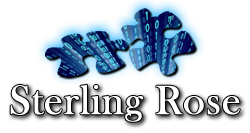From its beginnings as a “blog engine,” WordPress has grown to be one of the most popular systems for building large websites. Their beauty is their content management capability. Once a website is set up and published, anyone who can type and work with images can update the content. The ugly part is that many WordPress users don’t understand the basics behind the system. I know. I learned some hard lessons when revamping our site. Here are some things that deserve your attention.
WordPress has a built-in back-up system. However, that back-up covers your website’s infrastructure. It won’t cover your posts. So, if you make major changes to your site, such as the overhaul we did early this year, you’ll lose your archives – and you probably won’t notice that until somebody tells you they can’t find a post they wanted to read.
The same can be true with any files you access from “the cloud.” We are seeing more and more collaboration among businesses of all sizes, committees for volunteer groups and students working on a special project. We rely on everyone having access to the latest file for making comments and revisions, but more important, we rely on the host to deliver the correct file – as long as we’ve faithfully followed the procedure for getting it, saving it and returning it to the correct place.
Yes, attention to detail is the key to using technology efficiently. Data systems cannot understand intent.
Thus, the first detail you need to button down is to know who is hosting your website or all the programs and data files you and your employees or collaborators need to access and maintain. In some cases, it’s readily apparent. In others, it’s not. Track down a point of contact for each provider and make sure you have that information on paper.
Next, find out what they back up and how long they hold it. I learned the hard way that WordPress only backed up my infrastructure. None of my posts, such as articles written for this newsletter and other comments or articles I posted to the website, made it onto the new site. If your host doesn’t back up data files, find a place – or two – to stash yours, you might be best served by having an online storage provider, which keeps your files stored one or more servers. You back up that with some sort of in-house storage device, such as a portable hard drive.
After that, find out explicitly how you can back up your files and where they will be backed up. Just as immediately, get explicit instructions on how you restore everything. Commit all those steps to paper. All the value you have invested in your work – whether for business, volunteer work or academic projects – can vanish in a nanosecond if you can’t retrieve and restore your files.
The overriding question you need to answer is: Do you want to have this conversation before a disaster or in the middle of one? Getting all of this information is like having an insurance policy. We’re happy to be your “insurance agent” for these matters. We can help you determine the right questions to ask and the people likely to provide the answers. Just call us – 973-433-6676 – or drop us a note to start the conversation.
This article was published in Technology Update, the monthly newsletter from Sterling Rose LLC.



